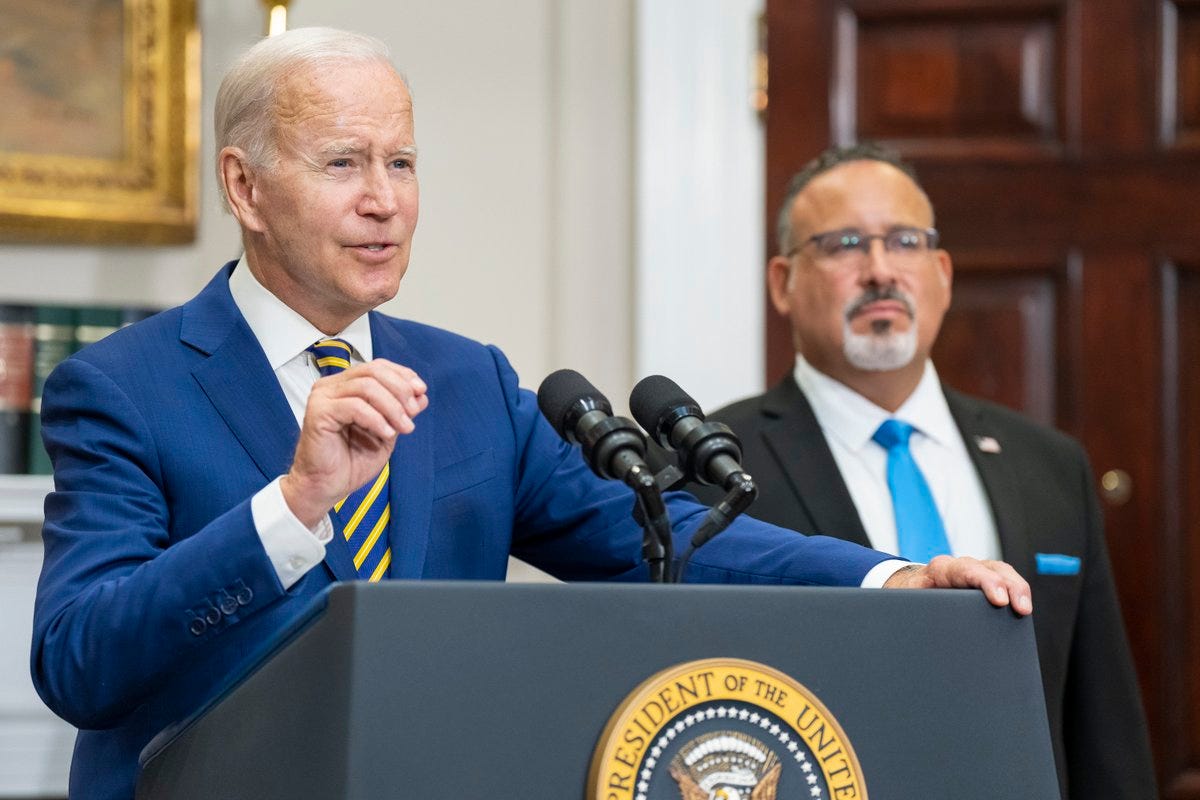
Welcome to new subscribers! We’re nearly past the 300 mark now, which means I will put up a new “Ask me anything about Iowa politics” discussion thread soon.
The big news of the week was President Joe Biden finally announcing his administration’s student loan reform plan. The unfiltered details are in this White House fact sheet. A press briefing on August 24 provided more context on some parts of the plan. I learned some things from the read-out, but I didn’t quote from it in my Bleeding Heartland post, because I don’t like the journalism practice of citing a “senior administration official” on background.
On my website, I focused on the hypocrisy of Republican critics who claim help for some student borrowers is unfair, even though they or their loved ones have benefited from other government handouts.
I also wanted to highlight how federal government policy has long favored wealthy people when it comes to higher education. I didn’t realize how much money the super-rich can sock away, tax free, in 529 plans. I recommend explainers by former financial adviser Georgina Tzanetos and asset manager Scott Schroeffel.
Parents who don’t need any help paying for their kids’ college are sheltering lots of disposable income from taxes. You don’t hear any complaints about this loophole from the politicians and pundits who are whining about some student borrowers having $10,000 in loans forgiven ($20,000 for those who qualified for Pell grants).
The Environmental Working Group’s database is the best resource for confirming how much Senator Chuck Grassley and his relatives have received in federal farm subsidies. (Shout out to KCAU-TV’s Dan Hendrickson for publishing that information alongside Grassley’s criticism of the “unfair” student loan reforms.)
ProPublica’s searchable database on the Paycheck Protection Program provided context on how large those PPP loans were. It also helped me confirm what some online sleuths brought to my attention: a company co-owned by U.S. Representative Ashley Hinson’s husband received more than $142,000 in loan forgiveness through PPP. I don’t have a problem with a small business getting federal government assistance to keep people on the payroll during the pandemic. But going by Republican logic, isn’t that “unfair” to hard-working Americans who didn’t qualify for PPP?
Although my piece didn’t focus on student borrowers’ personal stories, I was deeply moved by the testimonials Anne Helen Petersen compiled on her Substack, Culture Study. Many mentioned that buying a house or having children now seemed much more achievable.
I would welcome a Bleeding Heartland guest post by someone directly affected by the Biden Administration policy. Please contact me if you have any interest in writing, whether you are excited about the plan or dissatisfied by its limited scope.



